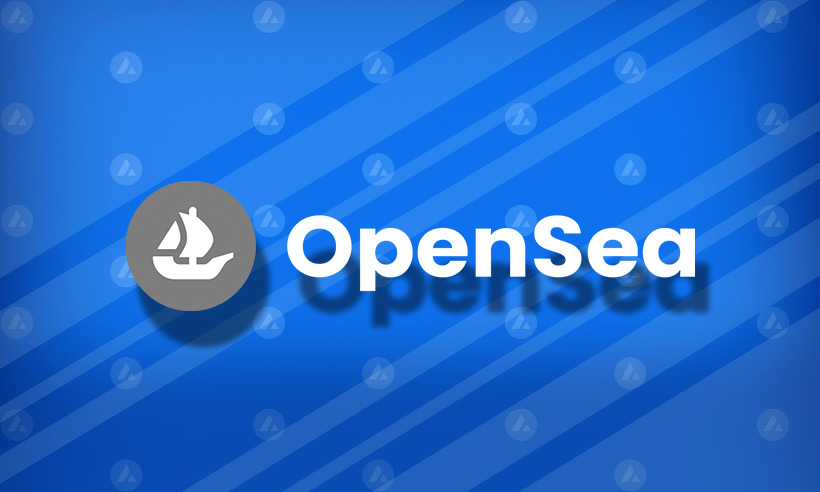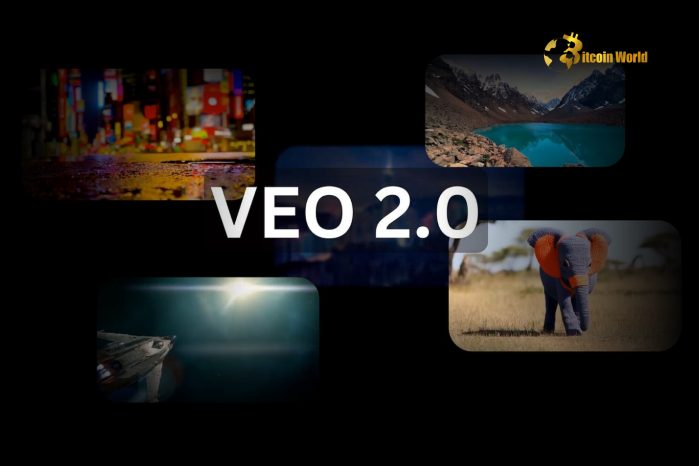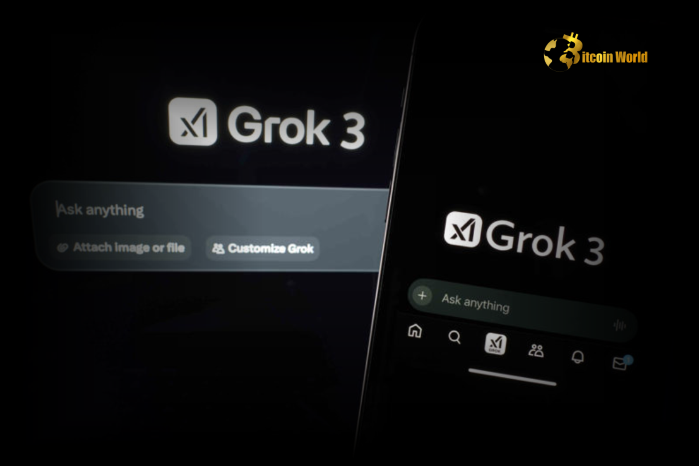
The decentralized finance (DeFi) space thrives on community governance, but sometimes, even in the most innovative ecosystems, disagreements arise. Currently, the Arbitrum community, known for its vibrant and engaged members, finds itself at a crossroads. A new DeFi investment proposal has ignited a fiery debate, raising critical questions about the direction of Arbitrum’s treasury and its commitment to native projects. Let’s dive into the heart of this controversy and understand what’s causing such a stir within this leading Layer-2 scaling solution. Why is the Arbitrum Community Questioning This DeFi Investment Proposal? At the center of the storm is a governance proposal put forth by the Arbitrum DAO’s recently formed Growth Management Committee (GMC). The proposal suggests a significant investment of 7,500 ETH (Ethereum) into various DeFi protocols. While investing in DeFi isn’t inherently controversial, the specific protocols chosen and the perceived lack of focus on Arbitrum-native projects have sparked considerable criticism. The community’s concerns can be summarized into a few key points: Prioritizing Non-Native Protocols: The proposal earmarks funds for established DeFi giants like Lido (for ETH staking), Aave (for lending and borrowing), and Fluid (a cross-chain lending protocol). While these are reputable platforms, critics argue that they are not native to the Arbitrum ecosystem. This raises questions about whether the investment truly benefits Arbitrum or simply disperses funds across the wider DeFi landscape. Neglecting Arbitrum-Native Projects: A significant portion of the community feels that the proposal overlooks the burgeoning DeFi projects built directly on Arbitrum. These projects are crucial for the long-term growth and vibrancy of the Arbitrum ecosystem. Investing in them could foster innovation, attract more users and developers, and solidify Arbitrum’s position as a leading L2 scaling solution . Lack of Transparency and Community Consultation: Some community members have expressed concerns about the process leading up to the proposal. They argue for more transparency from the GMC and greater community consultation before such significant investment decisions are made. Decentralized governance ideally involves inclusive discussions and consensus-building, and some feel this process was rushed or insufficiently collaborative. Risk Assessment and Diversification: While DeFi investments can be lucrative, they also carry inherent risks. Some community members are questioning the risk assessment conducted for these specific protocols and whether a more diversified investment strategy, potentially including a mix of native and non-native projects, would be more prudent. Breaking Down the DeFi Investment Proposal: What’s Actually Being Proposed? To understand the controversy fully, let’s examine the details of the DeFi investment proposal . The GMC’s rationale likely stems from a desire to generate yield on the Arbitrum DAO’s treasury and participate in the broader DeFi ecosystem. Investing in established protocols like Lido and Aave offers relatively lower risk exposure compared to emerging, untested projects. Here’s a closer look at the protocols mentioned: Protocol Description Potential Benefits Community Concerns (in this context) Lido A leading liquid staking solution for ETH and other assets. Users can stake ETH and receive stETH in return, which can be used in DeFi. Generates yield from ETH staking, relatively established and secure protocol. Not Arbitrum-native, yield benefits stETH holders generally, not specifically Arbitrum ecosystem. Aave A decentralized lending and borrowing protocol. Users can deposit assets to earn yield or borrow against their collateral. High liquidity, established platform, potential to earn yield from lending. Not Arbitrum-native, potential for capital outflow from Arbitrum ecosystem to Aave on other chains. Fluid A cross-chain lending protocol aiming to facilitate seamless lending and borrowing across different blockchains. Cross-chain exposure, potentially higher yield opportunities, innovative approach to DeFi. Less established than Lido and Aave, cross-chain nature might not directly benefit Arbitrum ecosystem, complexity and potential risks of cross-chain protocols. The proposal aims to allocate 7,500 ETH across these platforms, seeking to generate returns for the Arbitrum DAO treasury. However, the community’s pushback highlights a fundamental question: **What is the primary purpose of the DAO treasury, and how should it be utilized to best serve the Arbitrum ecosystem?** The Power of Decentralized Governance and Crypto Community Voices This situation underscores the importance of decentralized governance in the cryptocurrency world. The Arbitrum community’s vocal response demonstrates the power of token holders to influence decisions within a DAO. Their concerns are not simply about opposing the proposal; they reflect a deeper desire to shape the strategic direction of Arbitrum and ensure its long-term success. This debate is a healthy sign of a vibrant and engaged community that cares deeply about the project’s future. The criticism isn’t necessarily a rejection of DeFi investments altogether. Instead, it’s a call for a more nuanced and strategic approach. Many community members likely agree that utilizing the DAO treasury for yield generation is a sound strategy. However, they advocate for a shift in focus towards supporting and nurturing projects that are integral to the Arbitrum ecosystem. This could include: Investing in Arbitrum-Native DeFi Protocols: Allocating funds to promising DeFi projects built on Arbitrum would directly benefit the ecosystem. This could incentivize development, increase liquidity within Arbitrum’s DeFi space, and attract more users to the platform. Providing Grants and Funding for Ecosystem Development: The DAO treasury could be used to fund grants for developers building on Arbitrum, supporting infrastructure projects, or initiatives that enhance the user experience. Strategic Partnerships: Collaborating with Arbitrum-native projects through strategic investments or partnerships could foster mutual growth and strengthen the ecosystem as a whole. What’s Next for Arbitrum and Its DeFi Strategy? A vote on the DeFi investment proposal is anticipated soon. The outcome of this vote will be a significant indicator of the community’s priorities and its influence on the DAO’s decision-making process. Regardless of the vote’s result, this episode serves as a valuable lesson for other DAOs and crypto projects. It highlights the critical need for: Transparent Communication: DAOs should prioritize clear and open communication with their communities regarding proposals, strategies, and decision-making processes. Community Consultation: Engaging the community in meaningful discussions and seeking feedback before making significant decisions is crucial for building consensus and ensuring alignment with community values. Strategic Alignment: DAO treasury management should be strategically aligned with the long-term goals and vision of the ecosystem. Investments should ideally contribute to the growth and sustainability of the project. Balancing Risk and Reward: DeFi investments require careful risk assessment and diversification. A balanced approach that considers both potential returns and potential risks is essential for responsible treasury management. The Arbitrum community’s debate is a powerful example of crypto community engagement shaping the future of a project. It showcases the dynamic nature of decentralized governance and the importance of community voices in navigating the complexities of the DeFi landscape. As Arbitrum continues to evolve as a leading L2 scaling solution , how it addresses this proposal and incorporates community feedback will be crucial in defining its path forward. Actionable Insights: What Can We Learn from the Arbitrum Debate? This situation offers valuable insights for anyone involved in DAOs, DeFi, or the broader crypto space: For DAO Members: Actively participate in governance discussions, voice your opinions, and vote on proposals. Your voice matters in shaping the direction of decentralized projects. For Project Teams and DAOs: Prioritize transparency, community engagement, and strategic alignment in your governance processes. Listen to your community’s concerns and incorporate their feedback into your decision-making. For DeFi Enthusiasts: Pay attention to governance discussions within your favorite DeFi projects. Understanding the debates and proposals helps you grasp the underlying values and direction of these platforms. For Investors: Community engagement and governance are crucial indicators of a healthy and sustainable crypto project. Projects with active and vocal communities are often more resilient and adaptable in the long run. The Arbitrum DeFi investment proposal debate is more than just a disagreement over fund allocation; it’s a reflection of a community deeply invested in the success of its ecosystem. It’s a testament to the power of decentralized governance and the evolving dynamics of the crypto world, where community voices can truly shape the future. To learn more about the latest crypto market trends, explore our article on key developments shaping Ethereum institutional adoption.
Bitcoin World
You can visit the page to read the article.
Source: Bitcoin World
Disclaimer: The opinion expressed here is not investment advice – it is provided for informational purposes only. It does not necessarily reflect the opinion of BitMaden. Every investment and all trading involves risk, so you should always perform your own research prior to making decisions. We do not recommend investing money you cannot afford to lose.
SEC Concludes OpenSea Probe, Paving Way for NFT Innovation

The U.S. Securities and Exchange Commission (SEC) has officially concluded its investigation into OpenSea, one of the leading NFT marketplaces. This decisive move marks a key milestone for the platform as it navigates an evolving regulatory landscape in the digital asset space. OpenSea founder Devin Finzer celebrated the outcome on X, emphasizing its positive impact … Continue reading "SEC Concludes OpenSea Probe, Paving Way for NFT Innovation" The post SEC Concludes OpenSea Probe, Paving Way for NFT Innovation appeared first on Cryptoknowmics-Crypto News and Media Platform . Bitcoin World

Shocking Veo 2 Pricing Revealed: Google’s AI Video Costs $0.50/Second
Hold onto your hats, crypto enthusiasts and AI aficionados! Google has just dropped a bombshell about the highly anticipated Veo 2, their cutting-edge AI video model pricing . We finally know how much this powerhouse of video generation will set you back, and the numbers are… well, let’s just say they’re generating a lot of buzz. Is this the dawn of democratized video creation, or are we looking at a premium tool for the elite? Let’s dive into the details of the Google Veo 2 cost and see what it means for the future of content creation. Decoding the Veo 2 Pricing: What Does 50 Cents Per Second Mean? Google has quietly updated its pricing page, revealing that Veo 2 will operate on a pay-as-you-go model, charging 50 cents for every second of video generated. At first glance, this might seem like pocket change, but let’s break down what this AI video generation cost actually translates to: Per Minute: 50 cents/second * 60 seconds = $30 per minute Per Hour: $30/minute * 60 minutes = $1,800 per hour Suddenly, that 50 cents per second starts to look a bit more substantial. While it’s not going to bankrupt a major corporation, it definitely puts Veo 2 in a different category than some might have expected. Google DeepMind researcher Jon Barron even drew a comparison to the colossal budget of “Avengers: Endgame,” highlighting the vast difference in cost per second between a Hollywood blockbuster and AI-generated video – but is this a fair comparison? Let’s explore further. Veo 2 vs. Hollywood Budgets: Apples and Oranges? Barron’s comparison to “Avengers: Endgame,” with its reported $32,000 per second production cost, is certainly attention-grabbing. However, it’s crucial to understand that we’re comparing vastly different things. “Avengers: Endgame” involved: Massive crews and casts: Hundreds, if not thousands, of people working for months. Physical sets and locations: Building sets, securing locations, and managing logistics. Practical effects and CGI: A blend of real-world effects and computer-generated imagery. Extensive post-production: Editing, sound design, visual effects refinement, and more. Veo 2, on the other hand, is software. The AI video model pricing reflects the computational power, development costs, and ongoing maintenance of this complex technology. It’s a tool, not an entire production studio. While Veo 2 might not (yet) be capable of producing a feature-length film, its strength lies in rapid, on-demand video creation for various applications. How Does Veo 2’s Cost Compare to Competitors Like Sora? The elephant in the room is OpenAI’s Sora. While Sora’s pricing model isn’t directly comparable, it’s important to consider the competitive landscape. Currently, Sora is available to ChatGPT Pro subscribers who pay $200 per month. This subscription model offers a different value proposition. Let’s compare the two approaches: Feature Veo 2 (Pay-per-second) Sora (Subscription via ChatGPT Pro) Pricing Model $0.50 per second of video $200/month for ChatGPT Pro access Cost for 1 Minute Video $30 Potentially lower if generating many videos per month Cost for 1 Hour Video $1,800 Still $200/month subscription cost Accessibility Directly accessible (presumably) Requires ChatGPT Pro subscription Best Suited For Projects with variable video needs, where cost scales with usage. Users who anticipate frequent video generation within a month. The choice between Veo 2 and Sora (or other affordable AI video options as they emerge) will depend heavily on your specific needs and usage patterns. If you need short clips sporadically, Veo 2’s pay-per-second model might be efficient. However, for users generating videos regularly, a subscription model like Sora’s could prove more cost-effective in the long run. Is Veo 2’s Pricing a Game Changer or a Barrier? The Veo 2 pricing structure is undoubtedly a significant factor in its potential adoption. Let’s consider the potential impacts: For Professional Creators: For marketing agencies, news outlets, and businesses needing video content, Veo 2 could be a powerful tool, especially for supplementing existing video production workflows. The cost, while not insignificant, might be justifiable for specific projects. For Independent Creators and Hobbyists: The price point might be a barrier for casual users or independent creators on a tight budget. However, for specific projects where high-quality AI video is crucial, it could still be a viable option. Impact on the AI Video Market: Veo 2’s pricing sets a benchmark in the nascent AI video generation market. It signals that high-quality AI video generation is not yet a commodity and reflects the substantial resources required to develop and operate these models. Ultimately, whether Veo 2’s pricing is a game-changer or a barrier depends on your perspective and needs. It’s not designed to be a free or extremely cheap tool, but rather a professional-grade solution for specific applications. As AI video model pricing evolves and competition increases, we can expect to see a wider range of options emerge, catering to different budgets and use cases. Actionable Insights: Navigating the World of AI Video Costs So, what should you do with this information? Here are some actionable insights: Assess Your Video Needs: Before jumping into AI video generation, carefully evaluate your video requirements. How much video do you need? What level of quality is required? What is your budget? Compare Pricing Models: Don’t just look at Veo 2. Explore other AI video generation platforms and their pricing structures. Compare pay-per-second, subscription, and credit-based models to find the best fit for your needs. Start Small and Experiment: If you’re unsure, start with smaller projects and shorter videos to test the waters. Experiment with different AI video tools to see which ones deliver the best results for your specific use cases. Factor in Post-Production: Remember that AI-generated video might still require editing, sound design, and other post-production work. Factor these costs into your overall budget. Stay Updated on AI Video Trends: The AI video landscape is rapidly evolving. Keep an eye on new models, pricing changes, and emerging best practices to make informed decisions. The Future of AI Video: Premium or Accessible to All? Google’s Veo 2 pricing announcement is a significant moment in the development of affordable AI video technology. It highlights the current realities of developing and deploying advanced AI models. While the 50 cents per second cost might seem steep to some, it’s crucial to remember that this is still early days for truly high-quality, versatile AI video generation. As technology advances and becomes more efficient, and as competition heats up, we can anticipate a future where AI video generation cost becomes more accessible and democratized. For now, Veo 2 represents a powerful, albeit premium, tool in the evolving landscape of AI-driven content creation. To learn more about the latest AI market trends, explore our article on key developments shaping AI features. Bitcoin World











